Overview
As an environmentally friendly and low-cost transportation, bicycling has become the choice of many people. Whether you are the driver, rider, pedestrian or the road manager, obeying the bicycle lane signs is crucial for both road safety and individual’s life. This article will share some common cycling signs to help you better communicate with cyclists.
Four Types of Bikeway

Class I-Bike Path
Bike path, also called as multi-use path or trail, is designed for people biking, running or walking and are bike lanes separate from car lanes.
Class II-Bike Lane
Bike lane, a portion of the roadway, is painted with stripes and symbols on the street. Some of the bike lanes have a striped buffer area between the bike lanes and roadway.
Class III-Bike Route
There are no specific bike lanes for cyclists because the car roadways are not wide enough to accommodate another bike. The cyclists must share a lane with cars or pedestrians, which can be marked with signs or “sharrow”. It means “share lane arrows”.
Class IV-Separated Bike Lane
Separated bike lanes, also called protected bike lanes, are separated from any road users, such as pedestrians or motorists. These lanes are separated from motorized traffic lanes by barricades or barriers, including posts, street parking, or curbs.
Bike Lane Markings and Their Meaning
Bike Lane with Solid Lines
This type of lane can only be used for bikes. Cars are prohibited from parking or passing in the lane, and cars must yield to any bicycle traffic when turning right. Cyclists are required to follow the arrow marked on the road. This type of lane is also known as a standard lane and is found in most places in the country.
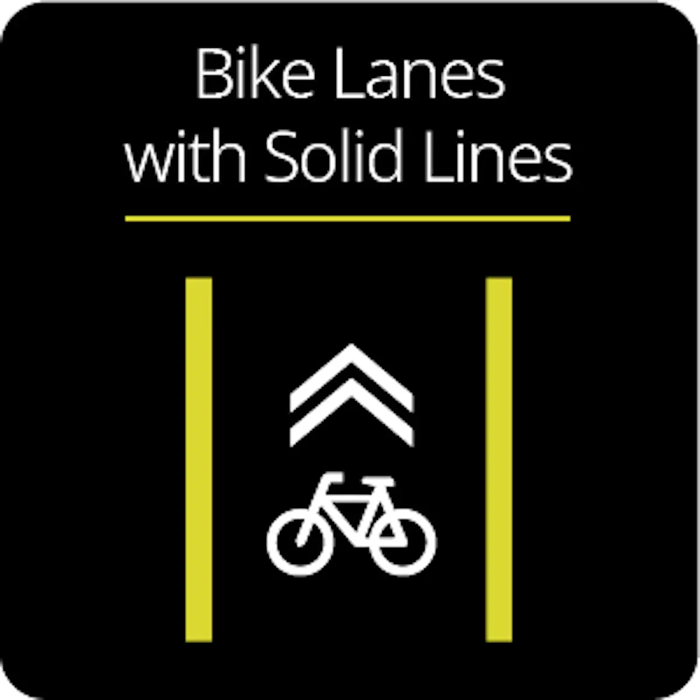
Shared Lane Markings
Also named as “Sharrow”, it means “share lane arrow”, containing the regular shared lane markings and green shared lane markings. They allow for motorized vehicles and bicycles, and bicyclists need to maintain a safe distance from parked vehicles on the side of the road. For the safety of the cyclist, the motor vehicle behind must be at least 3 feet away from the bicycle in front of it. Shared lane markings including bicycle symbol and a double chevron to indicate the direction of this pavement.
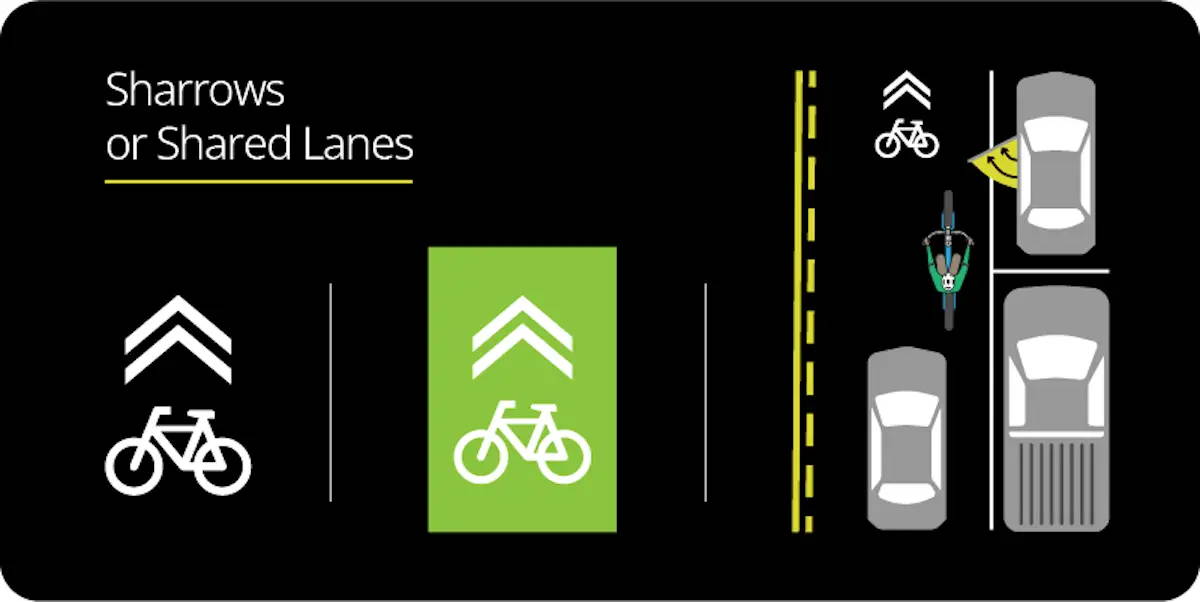
Advisory Bike Lanes
Also referred to as edge lane road, an advisory bike lane is usually used in narrow streets with low-volume. It is designed with a dotted line on the left and a solid white line on the right. The dotted line on the left side provides a safe space for cyclists, and motorists can also use this lane in order to pass oncoming traffic if necessary. So cyclists should always be prepared for the possibility that a motor vehicle next to them may pass this lane.
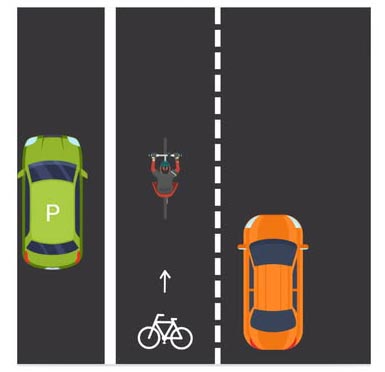
Protected Bike Lanes
Protected bike lanes are areas designed for bicycles that are completely separated from motor vehicle roadways. By installing bollards, plants, curbs, parked vehicles or traffic barriers in the middle of the bike lane and the motor vehicle roadway, it creates a safe and comfortable zone for cyclists and greatly reduces traffic accidents. Due to the median or all kinds of traffic bollards or barriers in the middle zone, the turning area of the junction can easily become the blind spot of motorists. Cyclists on protected bike lanes need to pay more attention when passing the junction or crossroads.
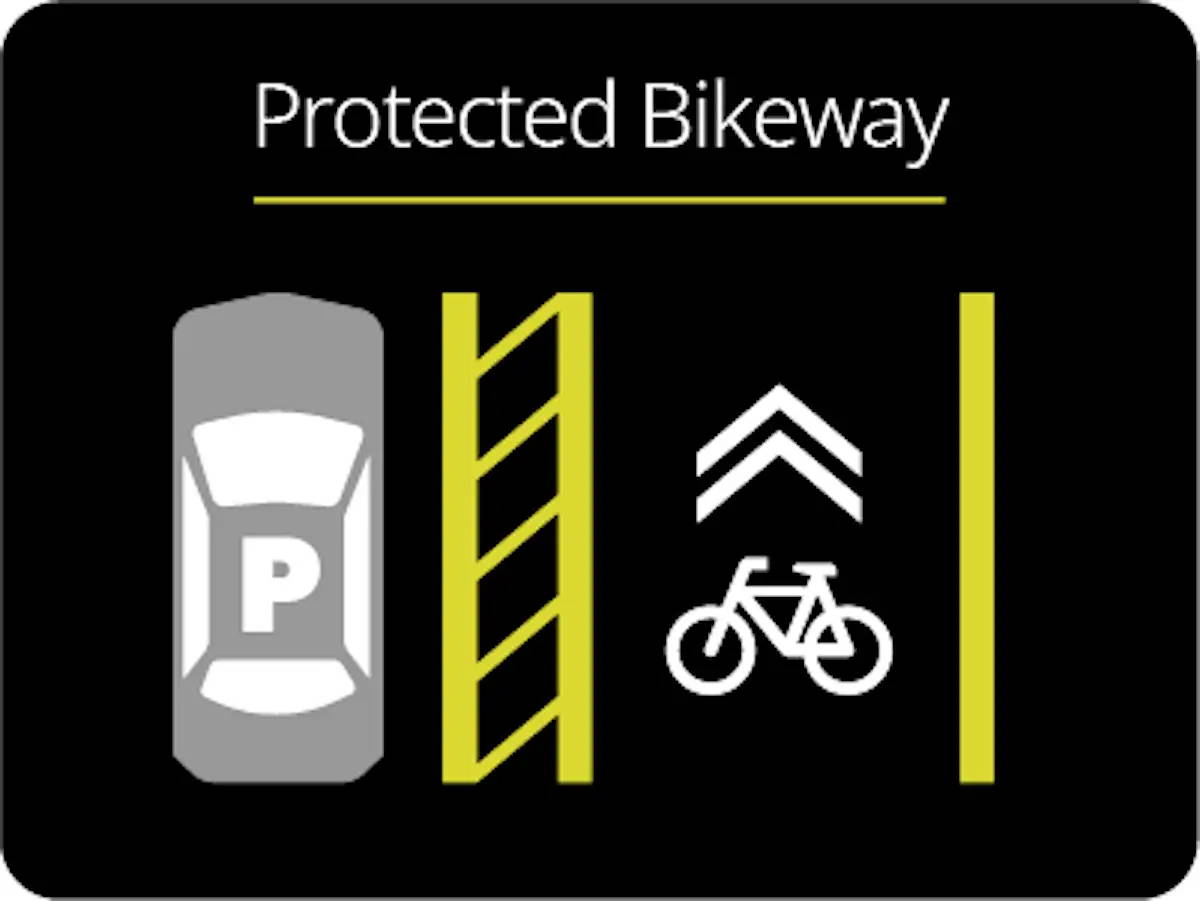
Buffered Bike Lanes
Buffered bike lanes are marked with white chevrons to provide an extra elbow room for bicyclists so it would be safer when they pass. Buffered bike lanes provide a buffered area and no vehicles are allowed to park or drive in this area. Drivers can only use buffered bike lanes temporarily when a motor vehicle needs to turn, enter, or leave the roadway. When drivers need to turn, they need to turn on their turn signal in advance and yield to bicycles.
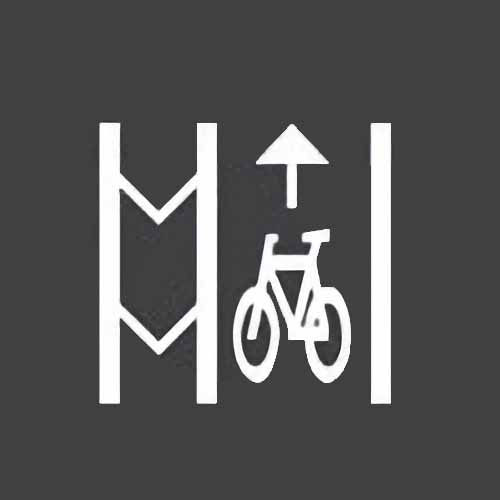
Two-way Cycle Tracks
Two-way cycle tracks allow bicycles to move in both directions on one side of the roadway, and the tracks are separated by double yellow lines. Two-way bike lanes should not be installed along the busy road where there are many side roads and entrances. There is also a buffered area or physical barriers between the two-way cycle tracks and the roadways, which eliminate the risk of the “opened door” and provide safety for cyclists from two directions.
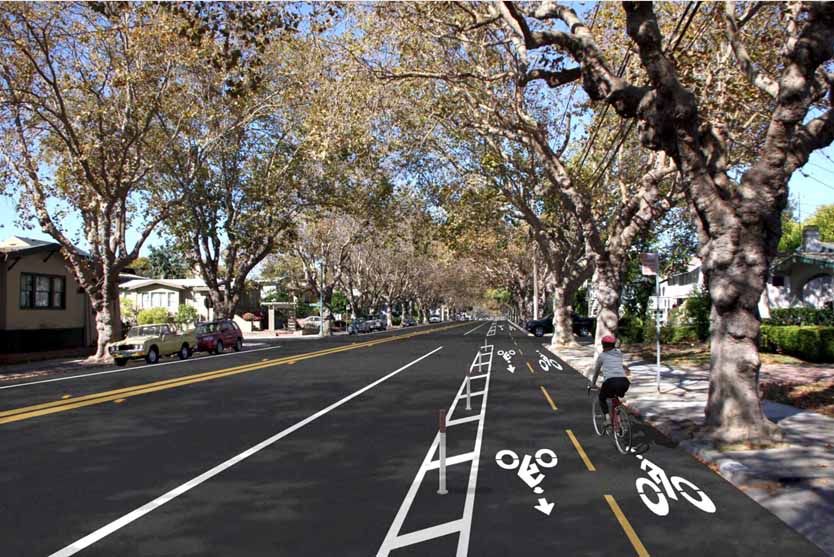
Green Bike Lanes
Green bike lanes are roadway markings to highlight spots where drivers merge into or turn across a bike lane. Bike lanes are highlighted with green to alert drivers that they must yield to cyclists on this lane. People will pay more attention to traffic safety when they see the green color.
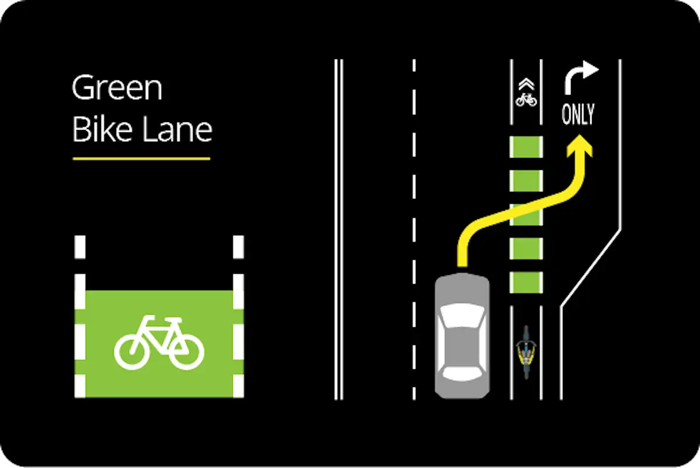
Bike Box
Providing a marked zone for cyclists to wait in and a stop line for drivers to wait behind, bike boxes enhance the safety of bicyclists when the signal is red. Bike boxes are often used at some intersections with signals. The purpose of the bike box is to allow bicyclists to wait in front of vehicles so that drivers can see them more easily, which can reduce traffic accidents in the intersections.
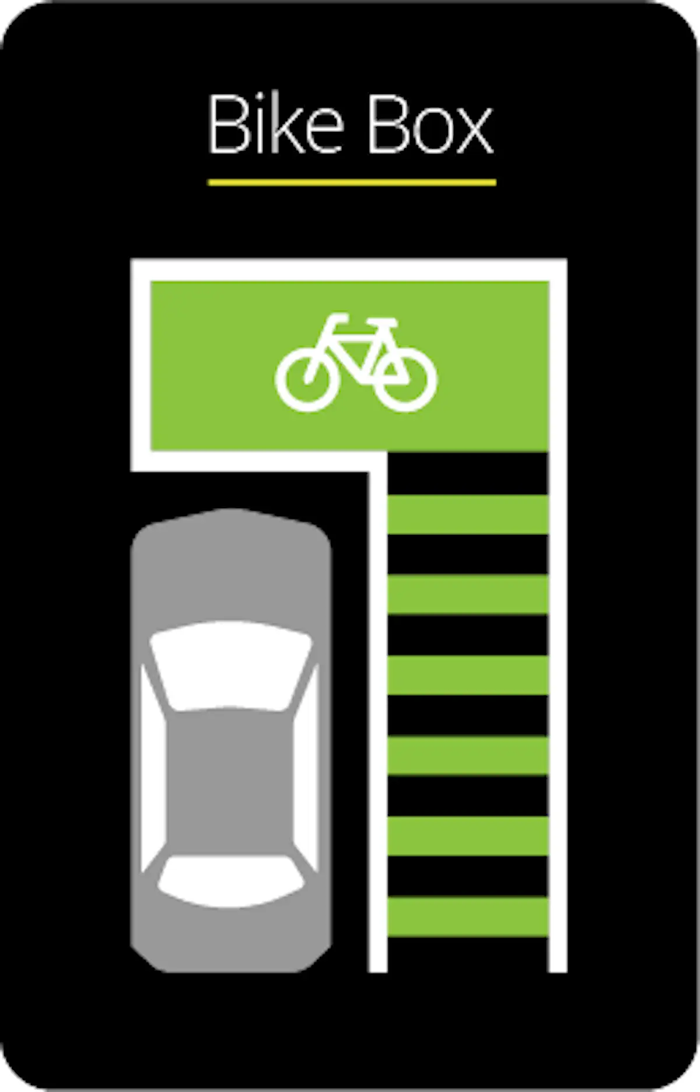
Other Bike Signs
R3-17 Bike Lane
With symbols and capital letters, this lane is designed for bicycles only. Cars and other vehicles are prohibited from entering the bike lane if not necessary.
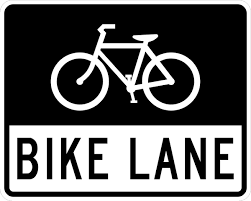
R4-4 Begin Right Turn Lane Yield to Bikes
Designed with capital characters and an arrow pointing to one direction, this sign alerts drivers that they are beginning to turn right and must yield to cyclists when entering a lane. It serves as a reminder for both cyclists and motorists to inform them of the changes in vehicles.
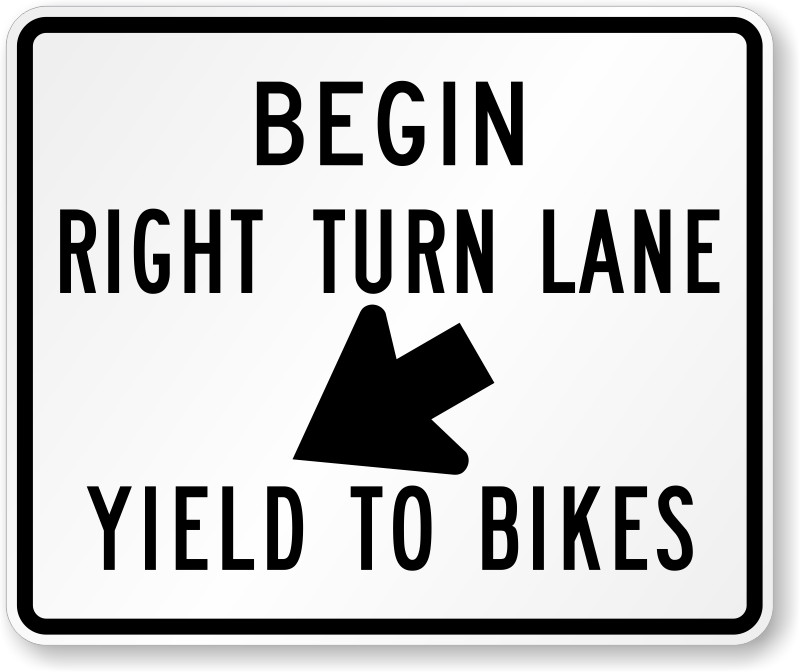
R5-1b Bicycle Wrong Way
This sign informs bicyclists that they are travelling in a wrong direction, which can often be placed on the left side of the roadway to remind the riders who are bicycling facing the traffic.
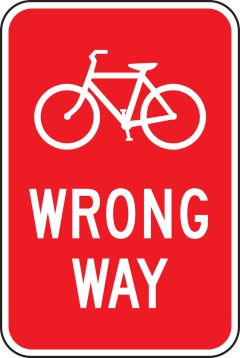
R5-6 No Bicycles
With contrast color, this sign can easily catch the riders’ attention, which means that bicycles are prohibited from using the roadway or facility. No Bicycles sign is perfect for playground or pedestrian walkway where kids can play and walk without worrying.
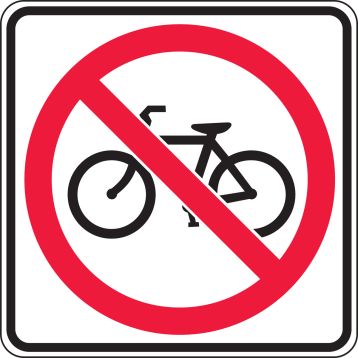
R9-3c Ride With Traffic
Usually placed on the left side of the roadway, this sign informs bicyclists that they must ride in the same direction as the vehicle traffic. It can reduce the risks and hazards that riders bring to pedestrians or motorists because of their traveling against the traffic.
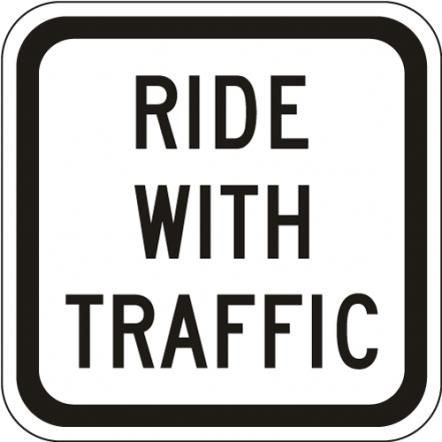
R9-5 Bicycle Regulatory
Inform bicyclists that they should follow pedestrian signals if there is no specific bike sign for riders. The riders should obey the pedestrian signals as the pedestrians do.
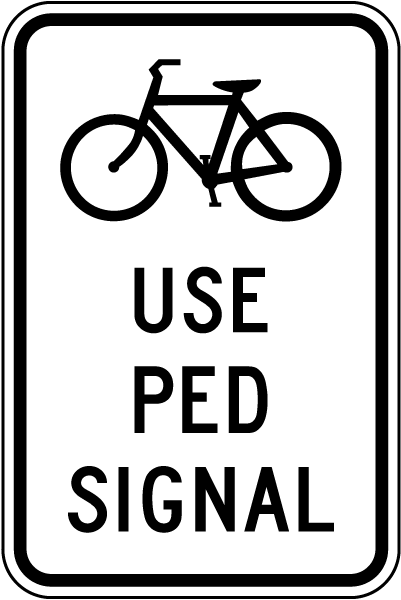
W8-10 Bicycle Surface Condition
Indicate the potential hazard of the slippery surface. Riders should be careful about unsafe and changing road conditions when there is slippery and uneven pavement, railroad crossings, drainage gates, or utility covers.
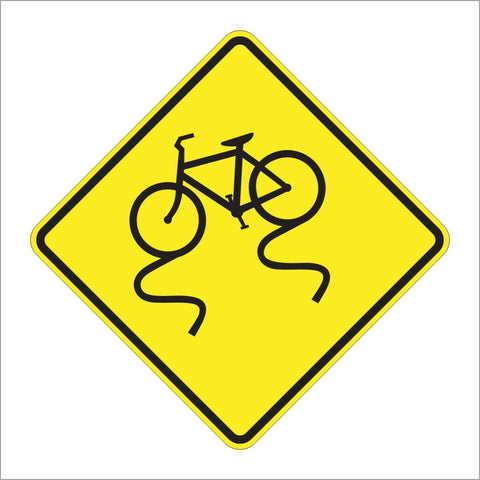
W11-1
Diamond shape with bicycle symbol on yellow background, which is used to alert road users to locations where bicycles may unexpectedly enter the roadway.

JACKWIN Your Trusted Bike Sign Supplier
Jackwin has been a professional Chinese manufacturer of road safety and parking products since 2008. We offer you a wide range of solutions for customized bike signs and other traffic safety signs to meet the standards of MUTCD. Our factory has a complete and proficient production line to meet any of your customization needs. Send us messages to get customized signs according to the size, color, material, and symbol you need. Contact us today.
Conclusion
We hope you now have good knowledge of the bike signs and their meaning. Whether you are cyclists, road owners, traffic engineers, or construction and engineering contractors, this article may meet your different needs when considering road safety and road maintenance. You will have a more comfortable and safer cycling condition if you know more about the bike lane signs.


-80x69.png)

